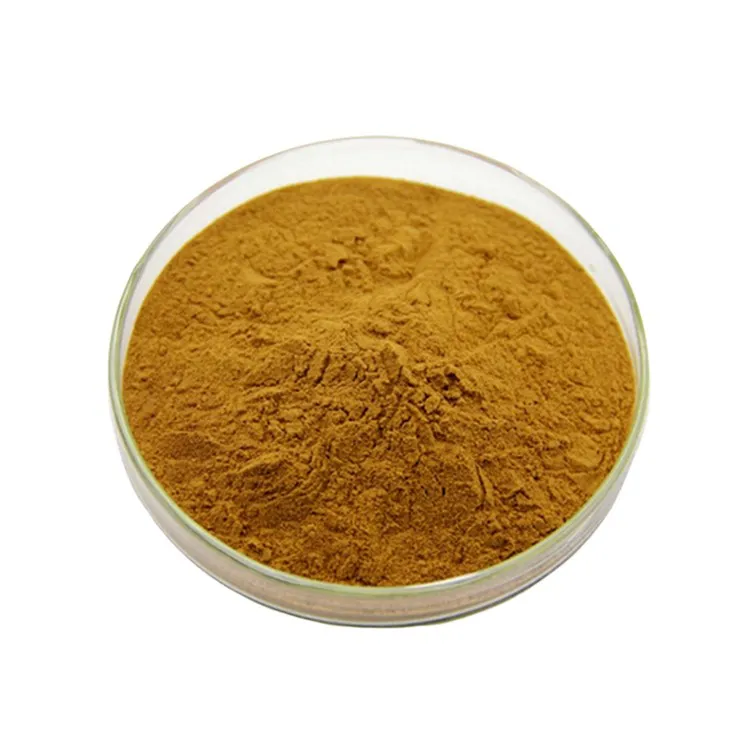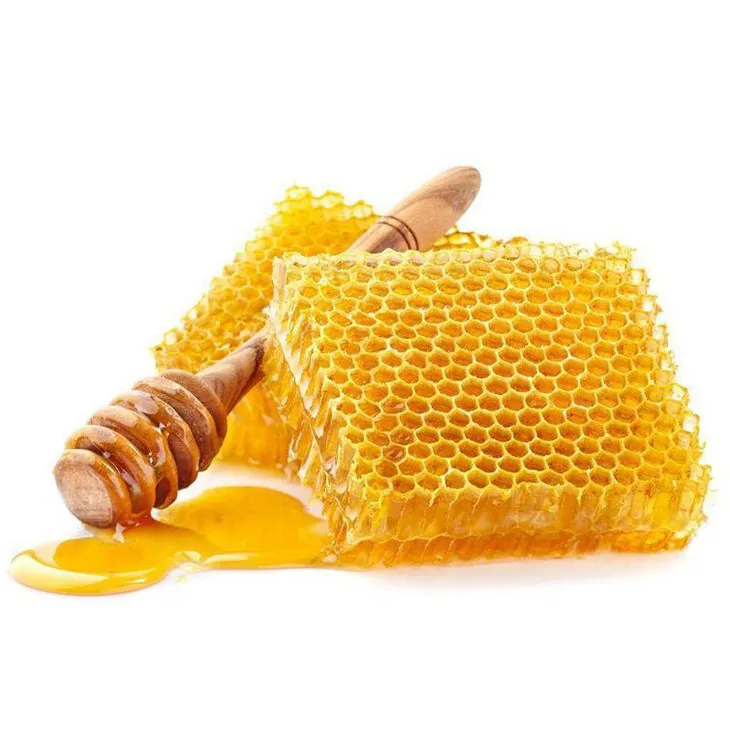- 0086-571-85302990
- sales@greenskybio.com
Propolis extract powder: Uses, advantages, and manufacturing processes.
2024-11-12

1. Introduction
Propolis Extract Powder has emerged as a substance with significant potential in various fields. Derived from bees, it has a long history of use in traditional medicine and is now being explored more comprehensively in modern applications. This article delves into its uses, advantages, and the manufacturing processes involved.

2. Uses of Propolis Extract Powder
2.1 In Traditional Medicine
Anti - inflammatory Properties: For centuries, Propolis Extract Powder has been used in traditional medicine for its anti - inflammatory properties. Arthritis, a common inflammatory condition, can potentially benefit from propolis. The inflammation - reducing capabilities of propolis may help in alleviating the pain and swelling associated with arthritis.
Oral Health: Another important use in traditional medicine is in the area of oral health. Propolis extract powder can be used in different oral care products. It can be an ingredient in mouthwashes and toothpaste. Its antimicrobial properties play a crucial role in preventing gum diseases and cavities. It helps in maintaining a healthy oral environment by inhibiting the growth of harmful bacteria in the mouth.
2.2 In the Food Industry
Natural Preservative: In the food industry, propolis extract powder is gaining popularity as a natural preservative. Due to its antimicrobial nature, it can help in extending the shelf - life of food products. It can prevent the growth of spoilage - causing microorganisms such as bacteria, yeasts, and molds. This makes it an attractive alternative to synthetic preservatives, especially for those consumers who prefer natural ingredients in their food.

3. Advantages of Propolis Extract Powder
3.1 Safety Profile
One of the most appealing aspects of propolis extract powder is its safety profile. As it is a natural substance derived from bees, it generally has fewer side effects compared to many synthetic drugs. However, it is important to note that some individuals may be allergic to propolis, but the overall incidence of severe allergic reactions is relatively low. For the majority of people, it can be a safe option for various applications.
3.2 Rich in Bioactive Compounds
Propolis extract powder is rich in bioactive compounds, such as flavonoids. These compounds are responsible for many of its beneficial functions. Flavonoids, for example, are known for their antioxidant properties. They can help in neutralizing free radicals in the body, which are associated with various diseases and aging processes. The presence of these bioactive compounds also contributes to its anti - inflammatory and antimicrobial effects.
3.3 Versatility in Formulations
Another advantage is its versatility in different formulations. Propolis extract powder can be easily incorporated into a wide range of products. For example, in the pharmaceutical industry, it can be used in the production of tablets. In the cosmetic industry, it can be an ingredient in creams and gels. This versatility allows it to be used in different delivery systems depending on the intended application, whether it is for topical use, oral ingestion, or other forms of administration.

4. Manufacturing Processes of Propolis Extract Powder
4.1 Sourcing of Raw Propolis
The first step in the manufacturing of propolis extract powder is the careful sourcing of raw propolis. The quality of the final product depends to a large extent on the quality of the raw material. Beekeepers need to ensure that the propolis is collected from healthy bee colonies. Purity is a key factor. Propolis should be free from contaminants such as pesticides, heavy metals, and other impurities. This may involve regular testing of the propolis sources and ensuring that the collection methods are in line with good agricultural and beekeeping practices.
4.2 Extraction Techniques
Once the raw propolis is sourced, different extraction techniques are employed to obtain the extract. There are several common methods:
- Solvent Extraction: This is one of the most widely used methods. A suitable solvent, such as ethanol or water - ethanol mixtures, is used to dissolve the active components in the propolis. The choice of solvent depends on factors such as the solubility of the desired compounds and the safety requirements for the final product. The propolis is soaked in the solvent for a certain period, and then the extract is separated from the insoluble residue.
- Supercritical Fluid Extraction: This is a more advanced technique. Supercritical carbon dioxide is used as the extraction medium. It has the advantage of being able to extract the active components without leaving behind any solvent residues. The supercritical carbon dioxide can be adjusted in terms of pressure and temperature to optimize the extraction of specific compounds in the propolis.
- Microwave - Assisted Extraction: In this method, microwave energy is used to enhance the extraction process. The microwave irradiation heats the propolis - solvent mixture, which can increase the mass transfer rate of the active components from the propolis to the solvent. This method can be relatively fast and can also help in reducing the degradation of the active components.
4.3 Processing into Powder Form
After obtaining the extract, it is processed into a powder form through drying methods. There are different drying techniques available:
- Spray Drying: This is a common method in the food and pharmaceutical industries. The propolis extract is sprayed into a hot drying chamber, where the solvent evaporates quickly, leaving behind fine powder particles. Spray drying can produce a powder with good flowability and solubility, which are desirable properties for many applications.
- Freeze Drying: Also known as lyophilization, this method involves freezing the propolis extract first and then removing the water (or solvent) under vacuum. Freeze - drying can preserve the structure and bioactivity of the active components better than some other drying methods. The resulting powder is often of high quality with a porous structure that can be easily reconstituted.
4.4 Quality Control
Quality control measures are implemented at every stage of the manufacturing process to guarantee the final product's quality.
- Raw Material Testing: Before starting the extraction process, the raw propolis is tested for various parameters such as purity, presence of contaminants, and the content of key bioactive compounds. This ensures that only high - quality raw material is used.
- During - Process Monitoring: During the extraction and drying processes, parameters such as temperature, pressure, and extraction time are carefully monitored. Any deviation from the optimal conditions can affect the quality of the extract and the final powder. For example, if the extraction temperature is too high, it may lead to the degradation of some bioactive compounds.
- Final Product Testing: The finished propolis extract powder is thoroughly tested. Tests may include analysis of the content of bioactive compounds, microbial contamination, and physical properties such as particle size and solubility. Only products that meet the specified quality standards are released for commercial use.

5. Conclusion
Propolis extract powder has a wide range of uses, from traditional medicine to the food and cosmetic industries. Its advantages, including a favorable safety profile, richness in bioactive compounds, and versatility in formulations, make it an attractive substance for various applications. The manufacturing process, which involves careful sourcing, appropriate extraction techniques, powder - forming methods, and strict quality control, ensures that high - quality propolis extract powder is produced. As research continues, it is likely that more applications and benefits of propolis extract powder will be discovered, further enhancing its value in different fields.
FAQ:
What are the main uses of propolis extract powder in traditional medicine?
Propolis extract powder has been used in traditional medicine for centuries. It is mainly known for its anti - inflammatory properties, which are beneficial for treating conditions like arthritis. It also has a positive impact on oral health and can be used in mouthwashes or toothpaste to prevent gum diseases and cavities.
Why can propolis extract powder be used as a natural preservative?
Propolis extract powder can be used as a natural preservative because of its antimicrobial nature. This property allows it to inhibit the growth of microorganisms, thus helping to preserve food.
What are the advantages of propolis extract powder compared to synthetic drugs?
One of the major advantages of propolis extract powder compared to synthetic drugs is its safety profile. As it is a natural substance derived from bees, it generally has fewer side effects. It is also rich in bioactive compounds like flavonoids that contribute to its multiple functions.
How can propolis extract powder be incorporated into different products?
Propolis extract powder is very versatile in different formulations. It can be easily incorporated into products such as tablets, creams, and gels due to its physical and chemical properties.
What are the key steps in the manufacturing process of propolis extract powder?
The manufacturing process of propolis extract powder has several key steps. First, the raw propolis must be carefully sourced to ensure purity. Then, different extraction techniques are used to obtain the extract while preserving the integrity of the active components. After that, the extract is processed into powder form through drying methods. Quality control measures are implemented at every stage of the manufacturing process to ensure the quality of the final product.
Related literature
- Propolis: A Wonder Beehive Product and Its Pharmacological Potentials"
- "The Chemical Composition and Biological Properties of Propolis"
- "Propolis Extracts: From Beehive to Biomedical Applications"
- ▶ Hesperidin
- ▶ Citrus Bioflavonoids
- ▶ Plant Extract
- ▶ lycopene
- ▶ Diosmin
- ▶ Grape seed extract
- ▶ Sea buckthorn Juice Powder
- ▶ Fruit Juice Powder
- ▶ Hops Extract
- ▶ Artichoke Extract
- ▶ Mushroom extract
- ▶ Astaxanthin
- ▶ Green Tea Extract
- ▶ Curcumin
- ▶ Horse Chestnut Extract
- ▶ Other Product
- ▶ Boswellia Serrata Extract
- ▶ Resveratrol
- ▶ Marigold Extract
- ▶ Grape Leaf Extract
- ▶ New Product
- ▶ Aminolevulinic acid
- ▶ Cranberry Extract
- ▶ Red Yeast Rice
- ▶ Red Wine Extract
-
Sugarcane Extract
2024-11-12
-
Ginger Extract
2024-11-12
-
Phellodendron Extract
2024-11-12
-
Feverfew Extract
2024-11-12
-
Shikonin
2024-11-12
-
Andrographis Paniculata Extract Powder
2024-11-12
-
Centella Asiatica Extract
2024-11-12
-
Bitter Melon Extract
2024-11-12
-
Alisma Extract
2024-11-12
-
Lily extract
2024-11-12





















